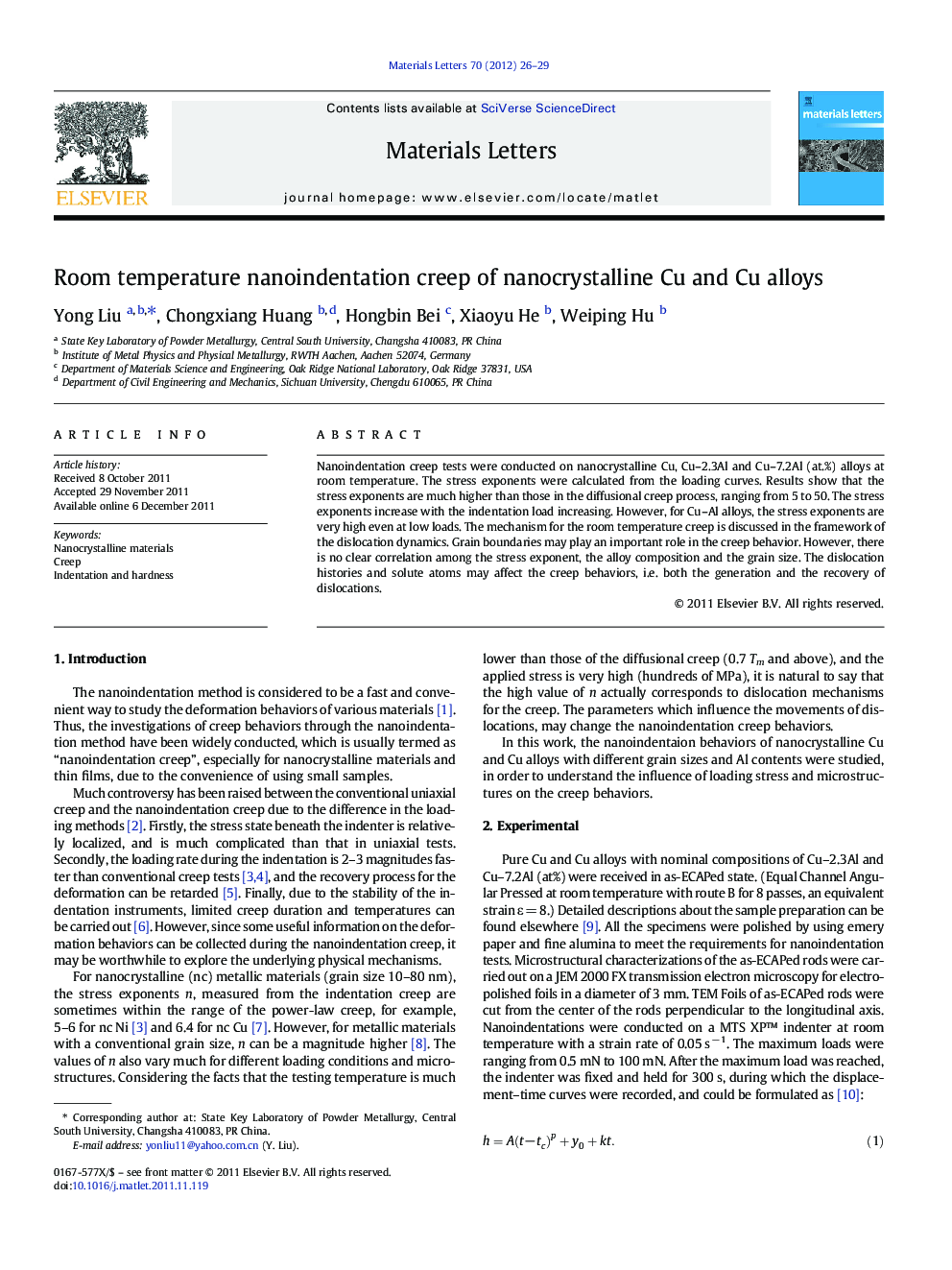| Article ID | Journal | Published Year | Pages | File Type |
|---|---|---|---|---|
| 1647322 | Materials Letters | 2012 | 4 Pages |
Nanoindentation creep tests were conducted on nanocrystalline Cu, Cu–2.3Al and Cu–7.2Al (at.%) alloys at room temperature. The stress exponents were calculated from the loading curves. Results show that the stress exponents are much higher than those in the diffusional creep process, ranging from 5 to 50. The stress exponents increase with the indentation load increasing. However, for Cu–Al alloys, the stress exponents are very high even at low loads. The mechanism for the room temperature creep is discussed in the framework of the dislocation dynamics. Grain boundaries may play an important role in the creep behavior. However, there is no clear correlation among the stress exponent, the alloy composition and the grain size. The dislocation histories and solute atoms may affect the creep behaviors, i.e. both the generation and the recovery of dislocations.
Research highlights►Stress exponents higher than 5 for nanoindentation creep of nanocrystalline Cu alloys. ►There are indentation size effects in the stress exponents. ►No clear correlation between the stress exponent, alloy composition and grain size. ►Grain boundaries are important for the dislocation dynamics in the creep.
